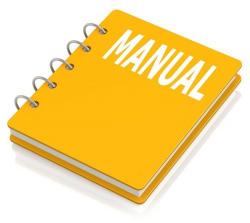Ford F-53 Motorhome, F-59 Commercial Stripped Chassis 2011 Factory Service & Shop Manual
Catalog:
Model:
Complete workshop & service manual with electrical wiring diagrams for Ford F-53 Motorhome, F-59 Commercial Stripped Chassis 2011. It's the same service manual used by dealers that guaranteed to be fully functional and intact without any missing page.
This Ford F-53 Motorhome, F-59 Commercial Stripped Chassis 2011 service & repair manual (including maintenance, overhaul, disassembling & assembling, adjustment, tune-up, operation, inspecting, diagnostic & troubleshooting…) is divided into different sections. Each section covers a specific component or system with detailed illustrations. A table of contents is placed at the beginning of each section. Pages are easily found by category, and each page is expandable for great detail. The printer-ready PDF documents work like a charm on all kinds of devices.
· F5D - Motorhome
· F5K - Commercial Stripped Chassis
· Y - 6.8L, 3V, electronic fuel injection, V10, Gas
EXCERPT:
2011 F-53 Motorhome, F-59 Commercial Stripped Chassis
Workshop Manual
Quick Links
Introduction
Master DTC Chart
Specifications
Metrics
Torque Wrench Adapter Formulas
Acronyms
Alphabetical Index
Table of Contents
1: General Information
00: Service Information
2: Chassis
04: Suspension
05: Driveline
06: Brake System
11: Steering System
3: Powertrain
03: Engine
07: Automatic Transmission
09: Exhaust System
10: Fuel System
4: Electrical
12: Climate Control System
13: Instrumentation and Warning Systems
14: Battery and Charging System
17: Lighting
18: Electrical Distribution
19: Electronic Feature Group
5: Body and Paint
01: Body
02: Frame and Mounting
…
Driveshaft
NOTE: Driveshafts are precision balanced and subject to handling damage. Do not drop or over-angle any of the joints.
There are 2 types of driveshafts used:
· Two-piece driveshaft with 3 U-joints, a front coupling shaft, a center bearing and a rear driveshaft
· Three-piece driveshaft with 4 U-joints, a front coupling shaft, 2 center bearings and a rear driveshaft assembly.
The basic function of a driveshaft is to transmit rotational torque from one point to another in a smooth and continuous action from the transmission to the axle. The driveshaft must operate through constantly changing relative angles between the transmission and axle. It must also be capable of changing length while transmitting the torque. This is accomplished through U-joints, which permit the driveshaft to operate at different angles and slip joints, which permit contraction and expansion of the required length to take place during jounce and rebound of the axle assembly.
…





